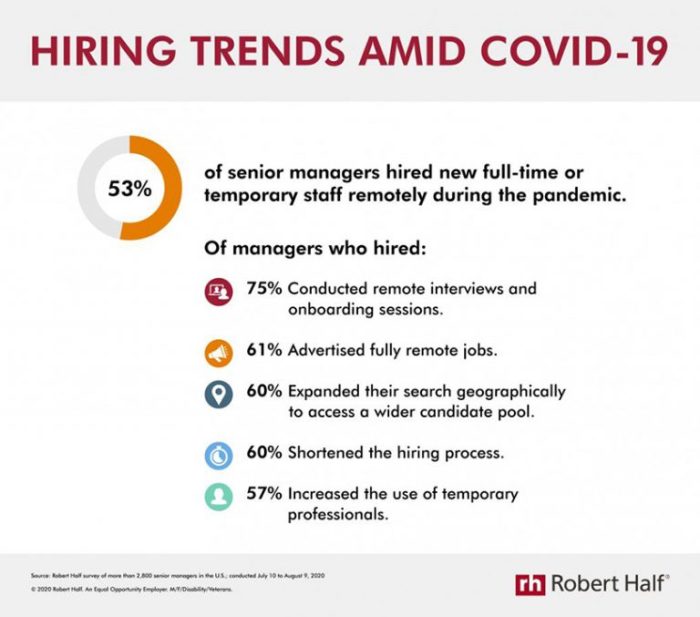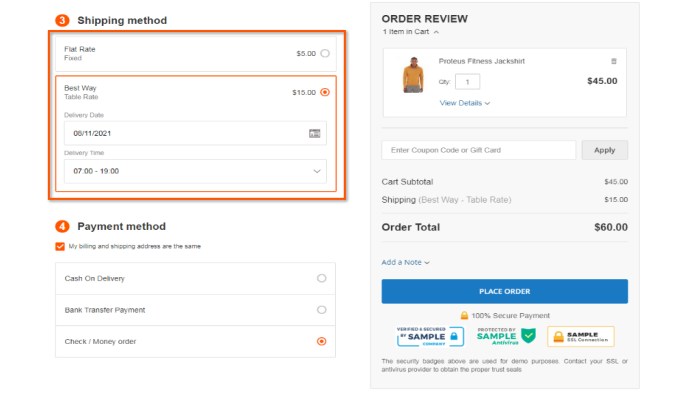Hiring employees during COVID presented unique challenges, forcing businesses to adapt their strategies. This guide explores the intricacies of recruitment, employee engagement, compensation, workplace adaptation, and employee turnover during this period. We’ll delve into remote hiring and onboarding, alternative assessment methods, and adjustments to compensation packages. The impact of the pandemic on traditional hiring practices will be analyzed, along with successful remote interview techniques and adapting job descriptions.
Navigating the evolving landscape of work during the pandemic required a shift in perspective. Businesses had to rethink traditional approaches to recruitment, employee engagement, and compensation. This guide examines strategies for maintaining employee engagement in remote teams, and how to build trust and transparency in virtual work environments. Furthermore, it highlights the evolving needs of employees, and the best practices for creating a hybrid work model.
Recruitment Strategies During COVID-19
The COVID-19 pandemic significantly altered traditional hiring practices, forcing organizations to adapt rapidly to remote work environments. This shift necessitated a reevaluation of recruitment strategies, requiring innovative approaches to sourcing, interviewing, and onboarding candidates. The need for flexibility and efficiency became paramount in maintaining a productive workforce amidst unprecedented challenges.The pandemic accelerated the adoption of remote work, and with it, the need for adaptable recruitment strategies.
Companies now had to leverage technology and innovative methods to connect with potential candidates, evaluate their skills, and integrate them into the remote workforce. This new reality demanded a move away from traditional, in-person processes and toward a more digitally-driven approach.
Impact of the Pandemic on Traditional Hiring Practices
The pandemic dramatically altered the landscape of hiring, moving away from in-person interviews and on-site visits. Companies had to embrace virtual platforms and alternative methods to evaluate candidates effectively. This shift highlighted the need for robust online presence, digital communication skills, and a flexible approach to candidate assessment. Companies recognized the importance of adapting traditional practices to remain competitive and attract qualified talent.
Strategies for Remote Hiring and Onboarding
Effective remote hiring necessitates a strategic approach, focusing on virtual communication and technology integration. Companies can utilize video conferencing tools for interviews, virtual assessments, and online personality tests. Prioritize clear communication channels, providing candidates with detailed information about the remote work environment and expectations. Onboarding processes should also be carefully adapted for remote settings, incorporating online training modules, virtual team introductions, and digital access to company resources.
Examples of Successful Remote Interview Techniques
Successful remote interviews leverage technology effectively to create a professional and engaging experience for both the interviewer and candidate. Tools like video conferencing platforms (Zoom, Google Meet) enable real-time interaction and allow candidates to showcase their communication and technical skills. Using pre-interview questionnaires and online assessments can streamline the process and allow for targeted candidate selection. Providing candidates with clear instructions and a structured interview format is crucial for a smooth and efficient process.
For example, a company might use a video interview platform to conduct initial screenings, followed by a series of virtual interviews with hiring managers.
Alternative Methods for Assessing Candidates During the Pandemic
The pandemic prompted the exploration of alternative assessment methods, such as virtual skills tests, online personality assessments, and project-based evaluations. These methods provide objective data on candidate skills and allow for a broader range of evaluation criteria. For example, a coding challenge can be administered online to evaluate a software engineer’s technical skills. A design brief can be presented virtually to assess a candidate’s design thinking abilities.
Adapting Job Descriptions for Remote Roles
Adapting job descriptions for remote roles requires highlighting the specific skills and attributes crucial for success in a virtual environment. Emphasis should be placed on communication, time management, and self-motivation. Clarifying expectations regarding work hours, communication protocols, and collaboration tools is essential for a productive remote work experience. For example, a job description for a remote marketing role might include specific requirements for using project management software, online communication tools, and remote collaboration strategies.
Comparison of In-Person and Remote Interview Processes
| Feature | In-Person Interview | Remote Interview |
|---|---|---|
| Location | Physical office | Virtual platform |
| Preparation | Travel arrangements | Technology setup |
| Interaction | Face-to-face | Screen sharing |
| Evaluation | Nonverbal cues | Verbal communication |
This table illustrates the key differences between in-person and remote interview processes. Careful consideration of these differences is crucial for conducting effective remote interviews. The remote approach demands a focus on verbal communication, clear instructions, and the use of appropriate technology to evaluate candidates effectively.
Maintaining Employee Engagement

Keeping employees engaged during times of economic uncertainty is crucial for business success. A dedicated and motivated workforce is more resilient and productive, even in challenging market conditions. Maintaining a positive and supportive work environment fosters a sense of belonging and encourages employees to contribute their best efforts. This is especially vital in remote work settings, where social connections can be easily overlooked.Employee engagement isn’t just about perks and benefits; it’s about creating a culture of trust, transparency, and genuine connection.
This involves actively listening to employees, understanding their needs, and responding to their concerns in a timely and empathetic manner. Such engagement fosters loyalty and commitment, leading to a more stable and high-performing workforce, even amidst economic fluctuations.
Importance of Employee Engagement During Economic Uncertainty
Maintaining high employee engagement during economic uncertainty is essential for several reasons. Firstly, it fosters a sense of stability and security for employees, reducing anxiety and promoting resilience. Secondly, engaged employees are more likely to be productive and creative, finding solutions to challenges and contributing to the company’s success. Thirdly, engaged employees are more likely to stay with the company, reducing turnover costs and maintaining institutional knowledge.
This, in turn, creates a more stable and efficient workforce, crucial for navigating difficult economic times.
Fostering a Sense of Community in Remote Teams
Creating a sense of community in remote teams requires intentional effort. Regular virtual team-building activities are key to fostering camaraderie and strengthening relationships. These activities should be designed to be inclusive and enjoyable for everyone, allowing team members to interact in a relaxed and informal setting.
- Team Lunches: Scheduling virtual lunches on a weekly basis allows employees to connect on a personal level. This provides opportunities for informal discussions, fostering a sense of community beyond work-related tasks.
- Virtual Games and Activities: Implementing virtual team-building activities such as online games or virtual escape rooms can promote interaction and bonding.
- Social Events: Organizing virtual coffee breaks, online movie nights, or other social events that are optional, allowing team members to interact outside of their usual work tasks, can significantly strengthen bonds.
Engagement Strategies for In-Person and Remote Teams
While the core principles of engagement remain consistent, the strategies for in-person and remote teams differ. In-person teams can benefit from more spontaneous interactions and informal gatherings. Remote teams, however, require more structured communication channels and planned activities to maintain a sense of community.
| Characteristic | In-Person Teams | Remote Teams |
|---|---|---|
| Communication | Face-to-face interactions, spontaneous conversations | Scheduled meetings, regular communication channels (e.g., Slack, Teams) |
| Team Building | Informal gatherings, team lunches, off-site events | Virtual team-building activities, online games, virtual coffee breaks |
| Feedback | Direct feedback during meetings, informal conversations | Structured feedback sessions, online surveys |
Regular Check-ins and Feedback Sessions
Regular check-ins and feedback sessions are essential for maintaining employee engagement in both in-person and remote settings. These sessions allow managers to understand individual needs and concerns, and provide support and guidance.
Navigating the tricky waters of hiring during COVID-19 required careful consideration of various factors. One crucial aspect, often overlooked, was streamlining payment processes. Using tools like HubSpot payment forms for transactions ( using hubspot payment forms for transactions ) made onboarding new employees much smoother and more efficient, which ultimately helped in managing the entire hiring process during this challenging time.
The ease of online payments reduced the friction in the hiring workflow, allowing for a more streamlined experience for everyone involved.
- Frequency: Regular check-ins should be scheduled to ensure consistent communication and feedback. A weekly check-in is generally a good frequency.
- Format: Check-ins can be brief 15-minute calls or more extended sessions, depending on the needs of the team and individual employees. The format should be flexible and allow for open dialogue.
- Topics: Topics for check-ins should include work progress, challenges faced, and overall well-being. Managers should be prepared to offer support and resources to address any issues that arise.
Virtual Team-Building Activities
Virtual team-building activities can foster camaraderie and a sense of belonging within remote teams. These activities should be designed to be inclusive and engaging for all team members.
- Icebreakers: Virtual icebreakers, such as fun online quizzes or personality tests, can help team members get to know each other better and build rapport.
- Interactive Games: Online games and challenges can provide a platform for team members to collaborate and compete in a fun and relaxed environment.
- Virtual Tours: Exploring virtual museums, historical sites, or other destinations together can foster a sense of shared experience.
Building Trust and Transparency in Remote Work Environments
Building trust and transparency is crucial for employee engagement in remote work environments. Open communication and clear expectations are vital.
“Transparency fosters trust and empowers employees to contribute effectively.”
- Open Communication: Maintain open communication channels to allow employees to voice their concerns and provide feedback without fear of reprisal. Regular team updates, open forums, and feedback mechanisms are critical.
- Clear Expectations: Establish clear expectations and responsibilities for each role to ensure everyone is on the same page. This includes outlining project goals, deadlines, and individual responsibilities.
- Regular Feedback: Implement regular feedback mechanisms, both from managers to employees and vice versa, to maintain transparency and address concerns promptly.
Compensation and Benefits: Hiring Employees During Covid
Navigating economic downturns requires thoughtful adjustments to compensation and benefits packages. Companies need to remain competitive while also managing costs effectively. This delicate balance is crucial for retaining talent and attracting new hires during challenging times. Adapting benefits packages to the needs of remote employees and those in specific industries impacted by the pandemic is also essential. This section explores strategies for achieving this balance.
Adjustments to Compensation Packages During Economic Downturns
Companies must carefully evaluate their compensation structures during economic downturns. Cost-cutting measures should be implemented strategically, avoiding drastic cuts that could negatively impact employee morale and retention. Freezing salary increases or reducing bonuses are often initial options. However, companies should also consider alternative compensation methods such as offering more flexible work arrangements or providing additional training opportunities to upskill employees.
These can maintain employee engagement while reducing direct compensation costs. For instance, companies might incentivize performance with profit-sharing plans, allowing employees to benefit directly from company success.
Creating Competitive Benefits Packages in a Challenging Job Market
Attracting and retaining top talent in a competitive job market requires a compelling benefits package. Companies should analyze industry benchmarks and competitor offerings to determine competitive levels. Focus on benefits that align with employee needs, such as health insurance, retirement plans, and paid time off. Flexible benefits options are becoming increasingly important. Offering a choice of benefits, such as flexible spending accounts or health savings accounts, empowers employees to personalize their coverage.
Flexible Benefits Options for Remote Employees
Remote employees often have unique needs and preferences regarding benefits. Companies can offer flexible work schedules and locations as a means to increase employee engagement. Flexible spending accounts (FSAs) or health savings accounts (HSAs) allow employees to set aside pre-tax dollars for eligible medical expenses. Additionally, offering various healthcare options, including virtual consultations, can improve accessibility and reduce costs.
Navigating the hiring landscape during COVID-19 was tricky, but it seems the changing expectations of buyers in the government contracting industry, as highlighted in new research how buyer expectations have changed in the government contracting industry , might have played a hidden role in the shifting dynamics. Companies adapting to these new standards, likely needed a more specialized workforce.
This in turn, probably impacted how companies approached hiring during the pandemic, requiring a fresh approach.
Remote work often requires specialized tools and resources. Companies may consider providing stipends for equipment or internet access as part of their benefits package.
Tailoring Compensation Packages for Specific Industries Impacted by the Pandemic
The pandemic impacted various industries differently. Companies should tailor their compensation and benefits packages to address the specific needs of their workforce. For example, industries heavily reliant on remote work may offer more flexible work arrangements and equipment stipends. Healthcare workers might require more comprehensive health insurance options or premium pay during high-stress periods. The hospitality industry might focus on flexible scheduling and additional training to address worker needs and recruitment challenges.
Understanding these nuances is critical to attracting and retaining employees in impacted industries.
Examples of Benefit Options
Adapting to Shifting Workplace Needs
The COVID-19 pandemic irrevocably altered the landscape of the modern workplace. Remote work became the norm, forcing companies to adapt rapidly to new technologies and methodologies. This shift brought about significant changes in employee expectations, and companies now need to anticipate and address these evolving needs to foster a productive and engaged workforce.The pandemic accelerated a pre-existing trend towards flexibility and work-life integration.
Employees value autonomy and control over their schedules, and employers must adapt their policies to reflect these priorities. The long-term implications of this shift extend beyond simply maintaining productivity; they encompass a fundamental re-evaluation of the employee experience.
Evolving Employee Needs
The pandemic highlighted the importance of work-life balance for employees. Many workers experienced increased stress and burnout due to blurred boundaries between work and personal life. This underscores the need for companies to provide clear guidelines and support systems for remote workers. Flexible schedules, adequate resources, and designated workspaces are critical to maintaining a healthy work-life balance.
Employees also seek greater transparency and communication from their employers, particularly during periods of uncertainty.
Emerging Trends in the Modern Workplace, Hiring employees during covid
The modern workplace is characterized by a rise in hybrid work models, a greater emphasis on employee well-being, and a growing demand for remote work options. Companies are increasingly recognizing the value of fostering a culture of trust and autonomy, enabling employees to work in ways that best suit their needs. The focus is on output and results, rather than rigid attendance policies.
Navigating the hiring landscape during COVID-19 was tricky, wasn’t it? Suddenly, the traditional ways of interviewing and onboarding needed a serious rethink. Companies had to adapt quickly to the new reality of merging digital real life merging digital real life , embracing virtual platforms for everything from initial chats to final job offers. This shift highlighted the importance of clear communication and flexible approaches when recruiting new talent.
Data suggests that productivity can often remain high, even with remote work arrangements, provided the right support systems are in place.
Creating a Hybrid Work Model
A successful hybrid work model requires careful planning and execution. It’s crucial to establish clear communication protocols, define roles and responsibilities, and create a system for seamless collaboration between remote and in-person teams. Establish clear guidelines on expectations for both in-office and remote work, outlining communication channels and tools for collaboration. This helps ensure everyone is on the same page.
Creating dedicated spaces for remote workers to connect and socialize, such as virtual coffee breaks, can foster a sense of community.
Creating a Supportive and Inclusive Environment
Fostering a supportive and inclusive environment for all employees is paramount. This involves actively listening to employee feedback, providing resources for mental health support, and creating opportunities for professional development. Companies must address potential biases and promote diversity and inclusion initiatives, particularly in the context of remote work, to ensure all employees feel valued and supported. Regular check-ins, both individual and team-based, help gauge employee well-being and address any emerging concerns promptly.
Managing Remote and In-Person Teams
Managing remote and in-person teams requires a multifaceted approach. Strong communication strategies are essential for keeping both teams aligned. Leveraging technology for seamless communication and collaboration is critical. Regular team meetings, both virtual and in-person, foster a sense of community and shared purpose. Companies need to equip remote employees with the necessary tools and resources to ensure they can perform their jobs effectively.
Regular feedback mechanisms, both formal and informal, can help manage expectations and ensure everyone is working towards common goals.
Advantages and Disadvantages of a Hybrid Work Model
A hybrid work model offers a blend of flexibility and collaboration. Employees gain the autonomy of remote work while still benefiting from the social interaction and collaborative spirit of in-person work. However, managing a hybrid workforce presents challenges related to maintaining team cohesion and ensuring consistent communication. It’s essential to establish clear communication protocols, leverage technology, and implement strategies to connect remote and in-person teams effectively.
Workplace Model Comparison
| Workplace Model | Advantages | Disadvantages |
|---|---|---|
| Fully Remote | Increased flexibility, work-life balance, potential cost savings | Communication challenges, reduced team cohesion, potential for isolation |
| Hybrid | Balance of flexibility and collaboration, reduced commute times, improved work-life balance | Managing both remote and in-person teams, maintaining team spirit, potential for inequity in access to resources |
| Fully In-Person | Direct interaction, strong team cohesion, easier to monitor productivity | Less flexibility, increased commuting times, potential for employee burnout |
Managing Employee Turnover

Employee turnover, a persistent concern for organizations, has taken on heightened significance during the COVID-19 pandemic. The unique circumstances of remote work, economic uncertainty, and shifting work-life balances have created a complex landscape for retaining talent. Understanding the factors driving turnover and implementing effective strategies to mitigate it are crucial for organizations navigating these challenging times.The pandemic has profoundly impacted employee expectations and priorities.
Factors like remote work flexibility, work-life balance, and company culture have become paramount considerations for employees. A deeper understanding of these evolving expectations is essential for crafting retention strategies.
Factors Influencing Employee Turnover During the Pandemic
Several factors contributed to increased employee turnover during the pandemic. These included concerns about job security, evolving work-life balance expectations, and shifts in career priorities. Many employees sought roles that better aligned with their personal circumstances and aspirations. Changes in the job market, with some sectors experiencing growth while others faced decline, also influenced employee decisions.
Strategies to Reduce Employee Turnover in Challenging Times
Implementing effective strategies to reduce turnover is crucial for organizations during this time. A proactive approach focusing on employee well-being, clear communication, and competitive compensation is essential.
- Flexible Work Arrangements: Offering flexible work arrangements, such as remote work options or adjusted schedules, can significantly enhance employee satisfaction and retention. Flexible arrangements allow employees to better manage their work-life balance, which is increasingly important in today’s world. This consideration directly addresses the shifting priorities of employees, and is especially relevant in post-pandemic work environments.
- Competitive Compensation and Benefits: Ensuring competitive compensation and benefits packages is critical. This may involve adjusting salary structures or offering additional benefits to reflect current market rates and employee expectations. This proactive approach to compensation and benefits reflects a commitment to employee well-being. For instance, companies that provide generous parental leave or healthcare benefits demonstrate their concern for their employees’ needs.
- Open Communication and Feedback Mechanisms: Establishing open communication channels and feedback mechanisms allows for the proactive identification and resolution of employee concerns. Regular check-ins and feedback sessions enable employees to voice their concerns and suggestions. Open communication demonstrates transparency and trust, which are crucial for maintaining employee engagement.
Improving Employee Retention in Remote Work Environments
Maintaining employee engagement in remote work environments requires specific strategies. Building a strong company culture and fostering a sense of community are key.
- Building a Strong Company Culture: Fostering a sense of community and connection is critical in remote settings. Virtual team-building activities, regular communication, and opportunities for social interaction can enhance engagement. These initiatives are essential for building a sense of belonging and reducing feelings of isolation. For instance, virtual happy hours or online game nights can promote a sense of community.
- Providing Resources and Support: Remote employees may require additional support and resources. Offering training on remote work tools, providing access to mental health resources, and ensuring reliable technology are all vital. These actions demonstrate a commitment to supporting employees in their new work environment.
Signs of Employee Dissatisfaction
Identifying signs of employee dissatisfaction is crucial for proactive intervention. This involves recognizing shifts in employee behavior, communication patterns, and performance.
- Decreased Productivity: A noticeable drop in productivity can signal underlying issues. This may stem from a lack of engagement or a sense of disconnect from the company. Reduced output can be a clear indicator of employee dissatisfaction.
- Increased Absenteeism: A significant increase in absenteeism, even if seemingly minor, may indicate underlying stress or dissatisfaction. This may be a symptom of an inability to effectively manage work-life balance.
- Negative Feedback or Communication: Negative feedback or communication, whether directly expressed or subtly communicated, can be a critical indicator of employee dissatisfaction. This requires a proactive approach to addressing the issues.
The Role of Employee Recognition Programs in Retaining Talent
Implementing employee recognition programs can significantly impact retention. Recognizing and appreciating employees’ contributions strengthens their connection to the company.
- Implementing Recognition Programs: Establishing clear criteria and processes for recognizing employee contributions fosters a culture of appreciation. Recognizing accomplishments, both large and small, can enhance motivation and commitment.
- Customizing Recognition: Tailoring recognition programs to individual employee needs and preferences can increase their impact. This demonstrates that the company values individual contributions and recognizes their uniqueness.
Wrap-Up
In conclusion, hiring employees during COVID required a proactive and adaptable approach. Companies needed to rethink their strategies, embrace remote work, and provide flexible compensation and benefits. Successfully navigating this period demanded a deep understanding of employee needs and a willingness to embrace change. The strategies Artikeld in this guide provide a framework for businesses to effectively recruit, engage, and retain talent in a post-pandemic world.
Adapting to the changing needs of the workforce will be crucial for long-term success.





